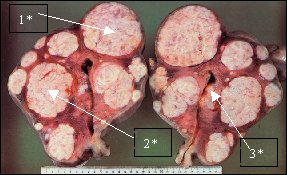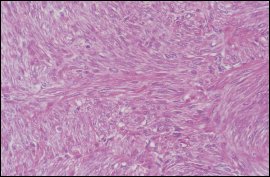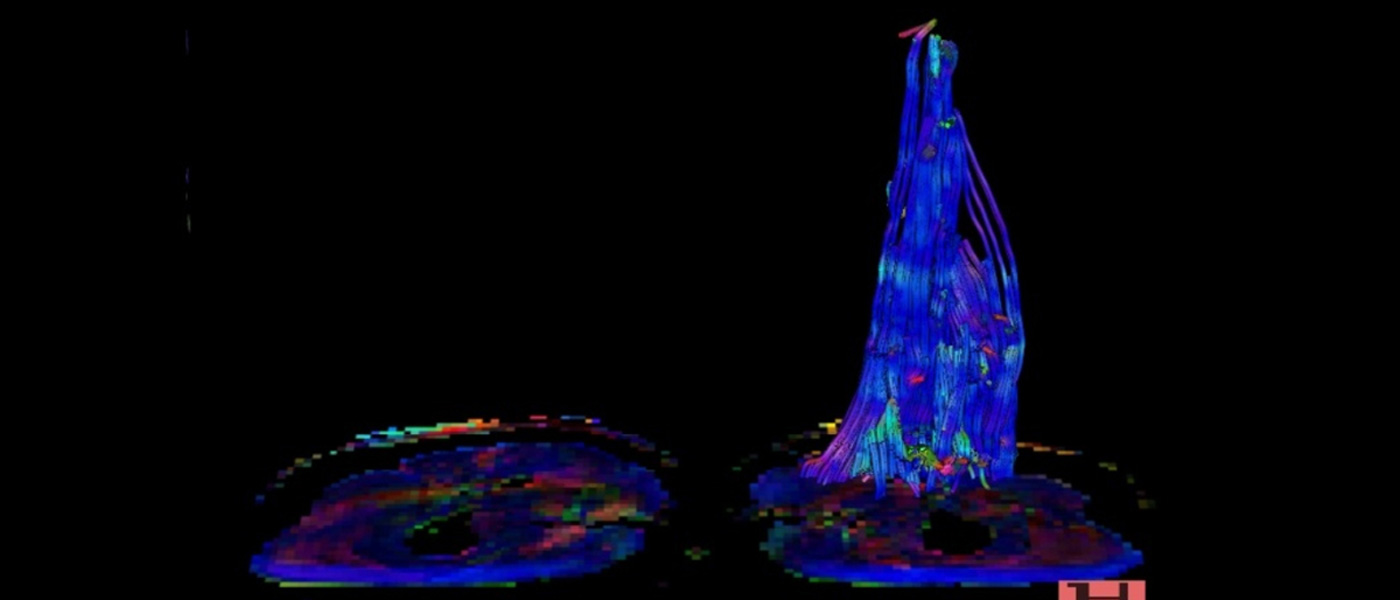Pathological specimen of a uterus (4070 gram) with multiple myoma. The extent of the tumors correspond to a pregnancy period of 28 weeks. (1- subserous, 2 - intramural, 3 - submucous).
Leiomyomas
What is a uterine fibroid?
It is a benign tumor that grows from the muscular
wall of the uterus and are made up of muscle and
fibrous tissue. There are three types of uterine fibroids
named according to their locations: subserous, intramural
and submucous.
Is it common to have a uterine fibroid?
Fibroid tumors or myomas, are the most common
pelvic tumors in females, with an overall incidence of 35%
to 50% among all women. One in four white women
and one in two black women are affected (1).
The tumors occur mainly in patients who are between
ages 35 and 50 years. Leiomyomas are responsible for
one third of gynecologic hospital admissions, and they
account for approximately 30% of all hysterectomies
(surgical removal of the uterus.
Where do they come from?
The factors involved in the cause, development and growth of uterine fibroids are poorly understood.
However the contributory factors for development of uterine fibroids include:
* Family history (close relative being affected).
* Race (blacks more than whites or Asians).
* Parity (nullipara women more affected than multipara).
* Obesity (increased body mass index).

The myomas are divided into 3 parts according to their location: subserous(1), intramural(2) which can be removed by laparoscopyand submucous(3) which is removed hysteroscopically.

Leiomyoma of Uterus: fibrous make-up of bundles of spindle-shaped muscle cells with interstitial connective tissue.
